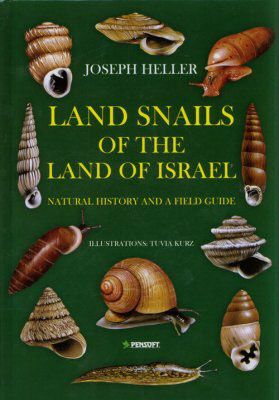|
This book covers the land snails and slugs of Israel, and is written by an academic who has worked on the subject for most of his career; however, it is eminently readable, and the illustrations by Tuvia Kurtz are superb. The book is divided into two parts. The first section concerns the natural history of Israel’s terrestrial gastropods. It provides some basic knowledge without which one cannot proceed, focusing on Israel’s land snails and slugs. There are 259 pages covering aspects of the shell, the body, activity, desiccation and heat, predation and defence, biogeography and interactions with man. (The chapter on desiccation and heat was written by Zeev Arad). I particularly liked the section on fossil history. The section then ends with two chapters on water snails of Israel and a historical chapter. Like the author and publisher, I also happen to think that the history of research is important, and I find biographies and old engravings of scientists, book covers, and illustrations of specimens fascinating. They not only provide historical background, interesting in itself, but an insight into the scientific community nearly 200 years ago, as well as documenting developments in the study of natural sciences. Each section is richly illustrated to show details on every aspect discussed in the text, including tables, graphs, maps, photographs and diagrams. Surprisingly, one then finds 16 pages of references in the middle of the book. After a double-take, one realizes this might be the logical place to put them, since the second section is primarily a field guide. However, it does take some adjustment, looking for a reference in the middle of the book, and I used a bookmarker. The second part is devoted to a detailed and fully illustrated description of each of the 105 contemporary species occurring in Israel, accompanied by its distribution map. This section is neatly arranged in columns, which works well for the most part, as each species fills a column with its text, distribution map and coloured drawings. The text describes the organism and its local distribution. My only criticism would be that a short line on the species’ larger world-wide distribution might have been useful, and no synonyms are provided; the latter could have been included in the checklist. After the species description there is a good glossary followed by an index of terms and scientific names, as well as more generalised words such as algae, beetles and crocodiles. In summary, I really enjoyed the book; it answers many questions one might ask of the snail fauna of a land with distinct marine, desert, and mountainous terrains and boundaries. The book is successful in its claim to be “addressed to specialists in snails, ecologists, bio-geographers, conservationists, travellers and anyone interested in the nature of the Near East.”
[see Journal of Conchology 2010 40(3) p.361 and
The Malacologist 55, p.17 (August 2010) for other reviews - Ed.]
|
2009, Pensoft Publishers, Sofia, Bulgaria. 320pp, 174 hand-drawn colour illustrations, 64 colour photographs, 80 b/w illustrations and 80 distribution maps. Hardback, 70, ISBN 978-954-510-2, ISSN 1312- 0174.
|
BOOK REVIEW: Land Snails of the Land of Israel – natural history and a field guide by Joseph Heller
Issue
25
Page
7

